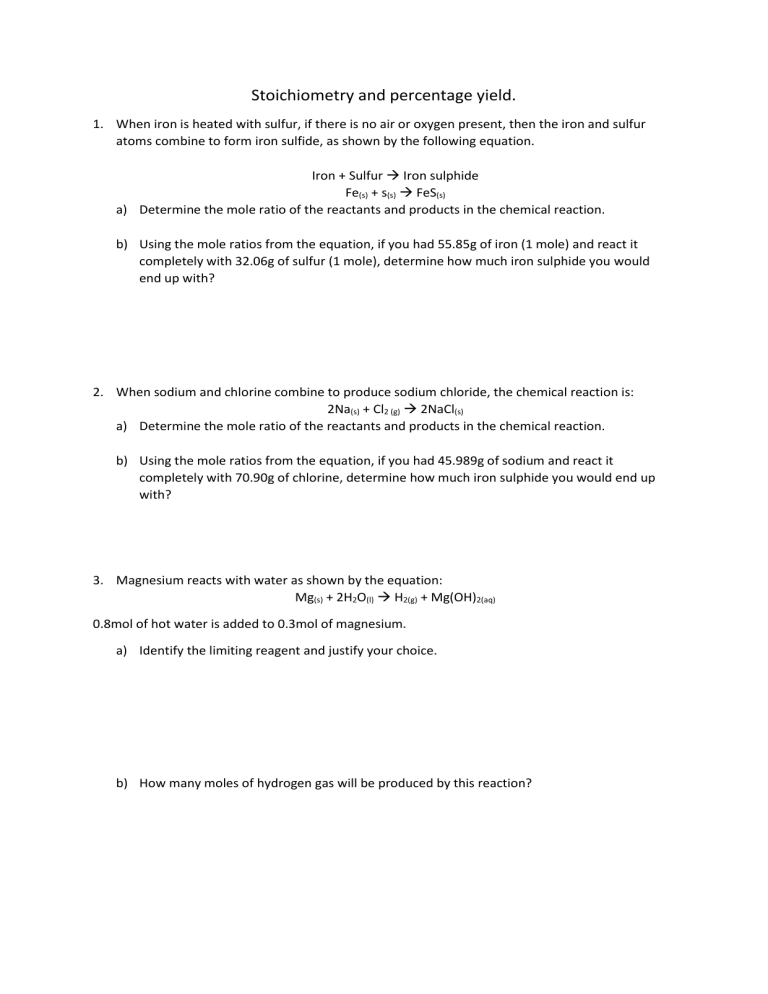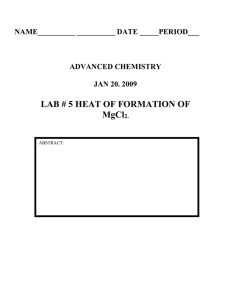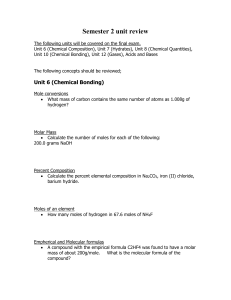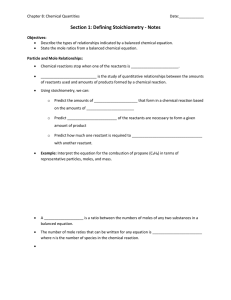
Stoichiometry and percentage yield. 1. When iron is heated with sulfur, if there is no air or oxygen present, then the iron and sulfur atoms combine to form iron sulfide, as shown by the following equation. Iron + Sulfur Iron sulphide Fe(s) + s(s) FeS(s) a) Determine the mole ratio of the reactants and products in the chemical reaction. b) Using the mole ratios from the equation, if you had 55.85g of iron (1 mole) and react it completely with 32.06g of sulfur (1 mole), determine how much iron sulphide you would end up with? 2. When sodium and chlorine combine to produce sodium chloride, the chemical reaction is: 2Na(s) + Cl2 (g) 2NaCl(s) a) Determine the mole ratio of the reactants and products in the chemical reaction. b) Using the mole ratios from the equation, if you had 45.989g of sodium and react it completely with 70.90g of chlorine, determine how much iron sulphide you would end up with? 3. Magnesium reacts with water as shown by the equation: Mg(s) + 2H2O(l) H2(g) + Mg(OH)2(aq) 0.8mol of hot water is added to 0.3mol of magnesium. a) Identify the limiting reagent and justify your choice. b) How many moles of hydrogen gas will be produced by this reaction? 4. 3.29g of zinc reacts with 2.74g of hydrochloric acid. The equation for this reaction is: Zn(s) + 2HCl(aq) ZnCl2(aq) + H2(g) a) Calculate the moles of reactants available. b) Identify the reactant that is the limiting reagent and justify your answer. c) Calculate the mass of zinc chloride produced. 5. 1.46g of hydrochloric acid is added to 1.70g of magnesium carbonate and they react as shown by the equation. MgCO3(s) + 2HCl(aq) MgCl2(aq) + CO2(g) + H2O(l) a) Calculate the moles of reactants used. b) Is there a limiting reagent? Justify your answer? 6. In a chemical laboratory, 15.0g of an organic compound was produced. The calculated theoretical yield suggested that 18.5g should have been produced. Calculate the percentage yield. 7. Glucose is fermented to produce ethanol according to the following equation. C6H12O6 2CH3CH2OH(aq) + 2CO2(g) The yield is 15%. What mass of ethanol would be produces from 1.0kg of glucose. 8. The Haber process is used for the production of ammonia from nitrogen and hydrogen gases. N2(g) + 3H2(g) 2NH3(g) a) If 100mol hydrogen is reacted with 100mol nitrogen, which chemical is the limiting reagent? b) If 50g hydrogen is reacted with nitrogen: I. Calculate the moles of hydrogen reacted. II. What mass of nitrogen will be needed for complete reaction? III. Calculate the mass of ammonia that will be produced from 112g nitrogen and excess hydrogen if the process if 95% efficient.







